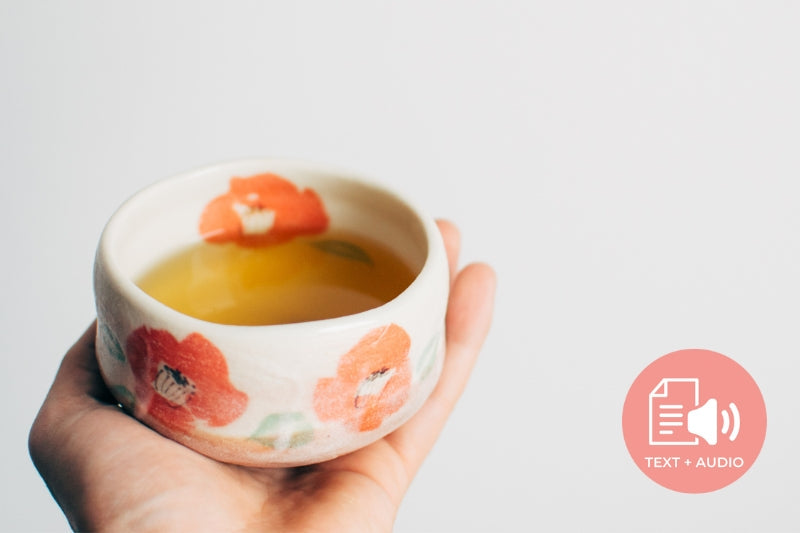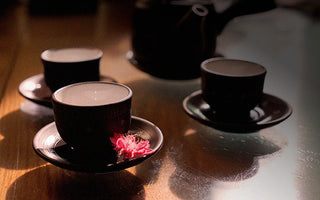Many health-conscious individuals have taken to adding green tea to their daily diet. This is because it’s reported to be one of the most beneficial natural food sources, and its regular consumption could only have positive effects on one’s health.
Although many claims about the health perks of green tea started out merely supported by anecdotal evidence and observations made through multiple generations of its consumption, a good portion of them are now backed by scientific studies. Its numerous benefits are discussed at length here.
At this point, despite the various diseases that green tea already helps prevent or combat, more are being added to the list as the health and medicine communities learn more about the beverage’s wholesome properties. One of those ailments now being studied for its response to green tea consumption is arthritis.

What is arthritis?
People may notice that, as they age, their joints become more swollen and tender, causing pain and stiffness. This combination of swelling and discomfort in the joints is called arthritis. There are different kinds of conditions; however, the two most common are rheumatoid arthritis and osteoarthritis.
Osteoarthritis happens when the cartilage covering the bones of your joints starts to wear away. This is a common consequence of aging. On the other hand, rheumatoid arthritis is an autoimmune disease. That means the body’s immune system attacks the joints, beginning with their lining. Both conditions result in pain and discomfort.
Does green tea relieve joint pain?
So, arthritis boils down to joint pain, and there have been studies showing that green tea helps ease it by addressing cholesterol and body fat issues. According to research, the catechins (a kind of natural phenol or chemical that protects plants from disease) in green tea decrease body weight, body mass index, waist circumference, body fat mass, and subcutaneous fat. So, how does this relate to joint pain?
While studies show that it is not the wear and tear brought forth by excess weight that causes joint pain, they indicate that those fat cells lead to inflammation. There’s a link between joint pain and fat-related factors such as elevated cholesterol, metabolic syndrome, and inflammation from excessive weight.
Considering this, research showing green tea’s anti-inflammatory effects suggests a strong likelihood that green tea may eventually be recommended as an adjunctive treatment for controlling joint pain and improving joint function.

How does green tea fight inflammation?
Green tea has epigallocatechin-3-gallate, or EGCG, a catechin or type of antioxidant that also acts as an anti-inflammatory agent. It is capable of stopping inflammatory activity through many different chemical pathways. This compound is essentially the main source of most of the health and medicinal benefits derived from green tea.
Green tea has another anti-inflammatory catechin called epicatechin-3-gallate, or EGC. Do not mistake them as the same thing; they’re not interchangeable. EGCG has received more research focus than EGC since it appears to be the more potent compound. It is also better absorbed and used by the body. Additionally, when it comes to green tea, EGCG is also the more dominant compound, accounting for 63 percent of the total amount of its catechins.
Can green tea treat rheumatoid arthritis?
Autoimmune arthritis works differently from osteoarthritis, even though it results in the same pain and stiffness. So, in terms of rheumatoid arthritis, joint damage is caused by immune system cells overproducing fibroblasts. These fibroblasts influence other immune cells to get into the joint cartilage and destroy it.
In a study with rodents, green tea demonstrated the ability to lower levels of these fibroblast-producing immune system cells. Meanwhile, in a study with human tissues, both EGCG and EGC were shown to inhibit the activity of these immune system cells.
Research also shows that green tea may correct metabolism, impact T-cells, which are part of rheumatoid arthritis’s immune response, and improve stress response, sleep, and mood. Altogether, these effects help prevent and manage cases of rheumatoid arthritis.

What about other kinds of tea?
A large-scale tea consumption study involving more than 700 participants was conducted in 2020. It showed that those who regularly drank tea, either green or black, had less active arthritis than those who drank little to no tea. Meanwhile, another study showed that while black tea had an anti-inflammatory effect, decreasing levels of several rheumatoid arthritis markers, green tea, besides the same, also had protective effects against rheumatoid arthritis.
Please note that green and black tea come from the same Camellia sinensis plant. The difference is in the time of their harvest. Green tea is harvested earlier than black tea.
Final Thoughts
Green tea offers great health benefits, but keep in mind that it’s not a miracle worker. Years of abuse resulting in degenerative damage do not get undone overnight. It’s best to remedy without incurring fresh damage, so sufferers should treat while preventing the worsening of the condition. In time, the improvement should be noticeable.
This post was first published in 2022, but it was updated in 2023 just for you.
Get Free Bonus Books

Sign up for free to the Green Tea Club to get advice and exclusive articles about how to choose Japanese Tea, and tips, tricks, and recipes for enjoying Japanese tea.
About the author
Kei Nishida
Author, CEO Dream of Japan
Certification: PMP, BS in Computer Science
Education: Western Washington University
Kei Nishida is a passionate Japanese green tea connoisseur, writer, and the founder and CEO of Japanese Green Tea Co., a Dream of Japan Company.
Driven by a deep desire to share the rich flavors of his homeland, he established the only company that sources premium tea grown in nutrient-rich sugarcane soil—earning multiple Global Tea Champion awards.
Expanding his mission of introducing Japan’s finest to the world, Kei pioneered the launch of the first-ever Sumiyaki charcoal-roasted coffee through Japanese Coffee Co. He also brought the artistry of traditional Japanese craftsmanship to the global market by making katana-style handmade knives—crafted by a renowned katana maker—available outside Japan for the first time through Japanese Knife Co.
Kei’s journey continues as he uncovers and shares Japan’s hidden treasures with the world.
Learn more about Kei








